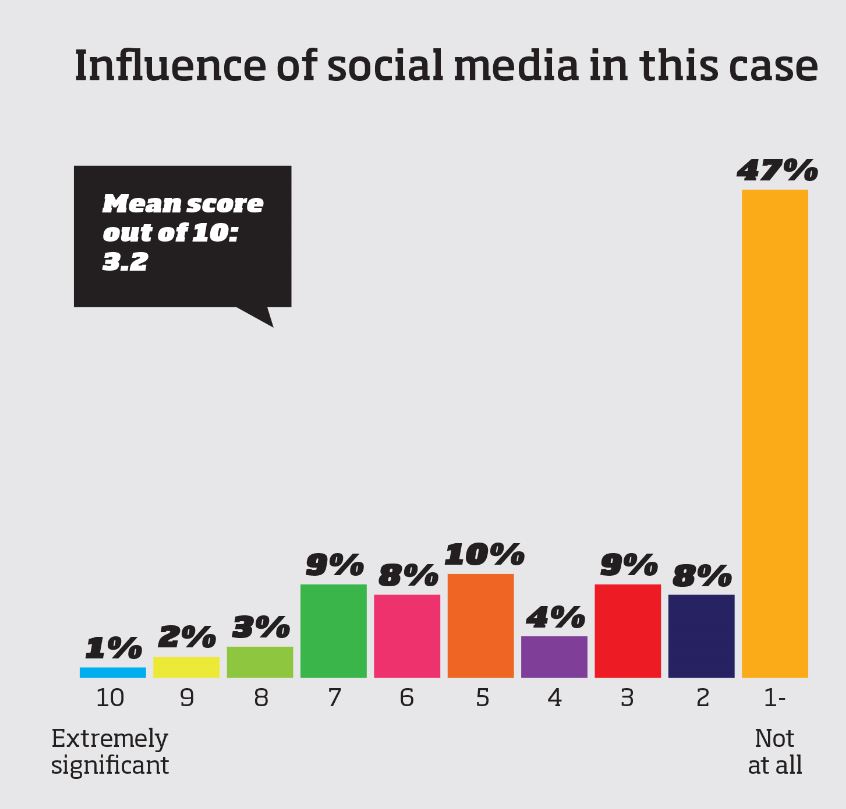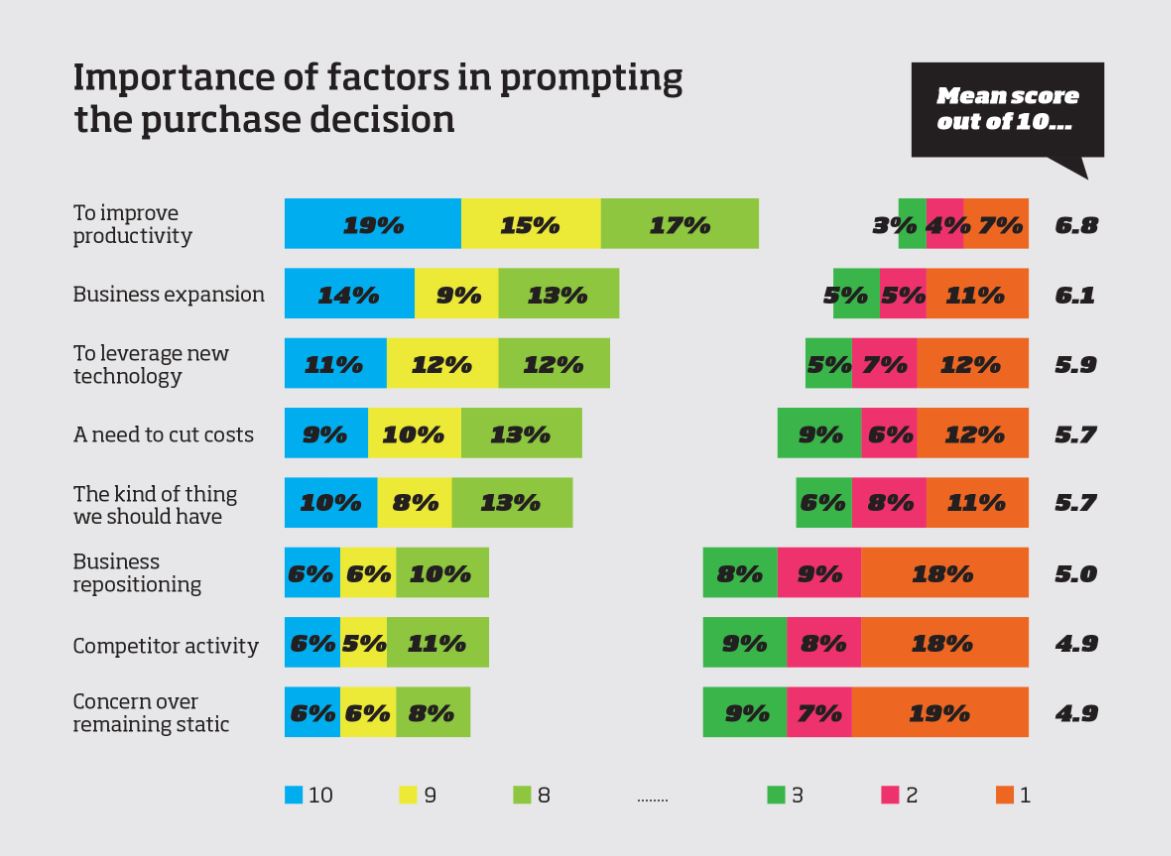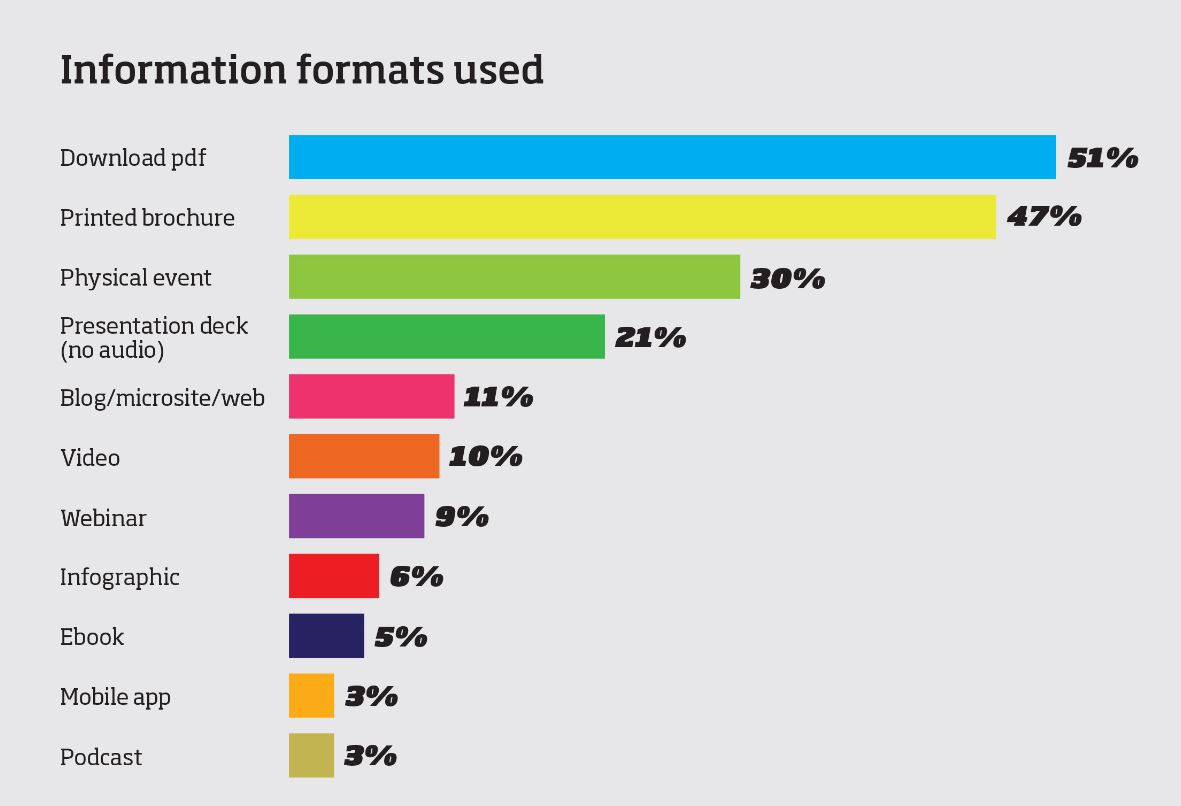By John Bottom, {grow} Community Member
The newly-released 2013 Buyersphere Report is a fascinating study of the business marketing world. But it is a survey with a twist because it doesn’t simply canvas marketer’s opinions — it also asks 500 European B2B procurement professionals about what they actually did while considering a real, major purchase over the last 12 months.
The 2013 results provide a direct and frank overview of factors such as social media usage, information gathering techniques and general buyer behavior … and more interestingly, it reveals a few unexpected secrets!
I’ve outlined a few of these ‘guilty secrets’ below, along with my explanation of why I think they happened and what they mean.
B2B buyers: Social media curmudgeons?
The findings revealed an interesting polarization in terms of social media usage. Half of B2B buyers are distributed normally in terms of their use of social media: some more, some less enthusiastic about its value.
47% of buyers, however, do not claim to use it at all:
When invited to offer advice to a colleague considering using social media to support the buying process, a third said “don’t do it.”
Embedded within this statistic is a warning to brands to be selective and careful – not so much about their use of social media, but their emphasis on it. These are very different points.
There are clearly a number of buyers out there who don’t use social media. That is their choice – and bear in mind they are probably not guided by aversion to change, but by the usefulness of social media in their particular B2B niche. But, because they choose not to go on social media, they will probably never be impressed by the wonderful things your brand is doing on social media. Your thoughtful Facebook content and personable Twitter strategies will blossom without them, thank you very much, since you will only be showing that to people who care (to a greater or lesser extent, as shown by the normal curve). However, as soon as we start trying to divert the other half onto social media platforms against their will, we will have a problem.
A “share this on social media” call to action might be just about acceptable. But talk too much in print or on your website about the fun and games you are delivering exclusively on Facebook, and you may be inviting an antipathy that will ultimately dent sales. I can hear the anti-social media gang now. Given the choice of a supplier that talks my language, or the one that is constantly bleating on about how I should like them on Facebook, I know which one I would choose. Now, then, where’s my pipe and slippers? I’m just off to read my newspaper in peace.
Buyers are less rational than they believe
We know that there are emotional and rational reasons for a purchase. But this point was highlighted when we asked the question “Why did you set out to make the purchase in the first place?”
The idea was to find out what the initial driver was, so that marketers might be better placed to understand how to empathize with the buyer during the process. We offered a number of reasons for deciding to invest a large amount of money, ranging from “increased productivity” to “business expansion.” But we also threw in the option “because it was the kind of thing we should have.” A fairly arbitrary, emotional reason like this surely has no place in boardroom. Surely no hard-nosed business person would ever invest money on this premise – more to the point, surely they wouldn’t admit it.
But they did.
It was in fact the fifth most popular reason for starting the buying process. More important than “keeping up with competitors,” it had the same mean score among respondents as “the need to cut costs.”
We might ask why. Is it that reasons do not always need to be articulated in rational terms? There is undoubtedly a material benefit to be gained from this emotionally-inspired decision, even though those responsible for setting the wheels in motion cannot explain it more explicitly. For me, however, I believe there is a further conclusion to draw, which is the idea of prestige.
The product or service in question may be “the kind of thing they should have” because it is known to deliver “the kind of benefit that they should be receiving”. But I think it also follows that the people who ticked this box would be more likely to deal with “the kind of supplier they should be working with”. It is another pointer to the nebulous but immensely powerful effect of brand awareness. It is the business equivalent of driving a Rolls Royce or taking photos with a Hasselblad. And it applies to the big ticket items. Keep that strategic brand investment going, dear marketers. It’s not all about short-term sales.
Don’t be dazzled by video marketing
If you believe certain people out there, video is the most powerful marketing tool on the planet. Prospects love to see videos on our websites. They show the personal side of the brand. They showcase our in-house expertise. They are rich media, and everyone loves shiny, rich media, right?
Not necessarily. We get a more realistic picture of the influence and popularity of video as a format is we compare it to the format of the slide deck. We know those clunky old Powerpoint files don’t look as slick, but the Buyersphere Report shows that buyers are TWICE as likely to use presentation decks as they are a video.
21% of buyers downloaded a presentation deck to support in their information gathering. But only half that number watched a video.
Yes – it seems incredible to me too but don’t forget we actually asked 500 B2B buyers what they did. These are their answers. Can’t argue with the truth – all we can do is to try and explain what it means.
For me, a key difference between slide deck and video is one of control. You control the speed, therefore you control the time it takes to consume that information. Buyers are busy people but, more importantly, they are impatient people. If presented with a ten-minute video (especially when the star of the video is unknown) a buyer is unlikely to invest the time. It’s all or nothing. You can’t skim-read a video. But because you CAN do that with a presentation deck – with the added bonus of then being able to adapt and re-present it as your own – I suspect this is one of the reasons behind this finding.
The advice is not, obviously, to cut the video budget and release every piece of content in PowerPoint. But just to be aware of the shortcomings of video which, I suspect, have contributed to this statistic, and to re-consider your content program accordingly.
Unearth your own guilty secrets
Of course these are snapshots and should be taken in the context of the wider survey – which is available here for anyone who wants to see the whole report. But can you find more anomalies? Or do you have other explanations for the findings? And what do you think we should do as marketers in order to accommodate these idiosyncrasies?
 John Bottom is the Co-founder of Base One, a specialist business-to-business agency in Teddington, London, where he is the Head of Content & Communications. He is was also one of Mark Schaefer’s first Twitter followers.
John Bottom is the Co-founder of Base One, a specialist business-to-business agency in Teddington, London, where he is the Head of Content & Communications. He is was also one of Mark Schaefer’s first Twitter followers.
Illustration: Dublin Street art photographed by Mark Schaefer






